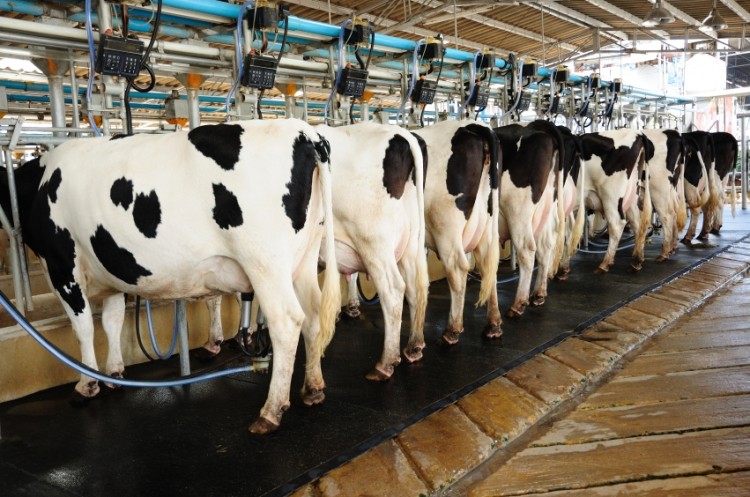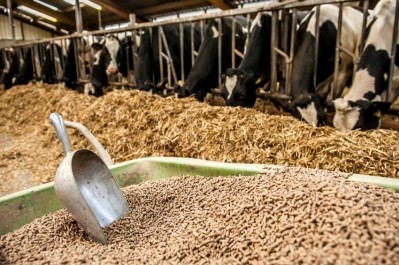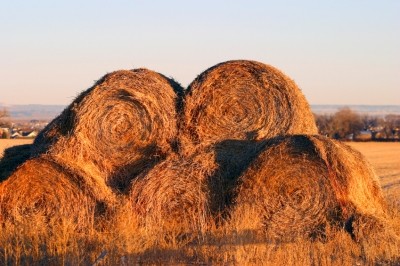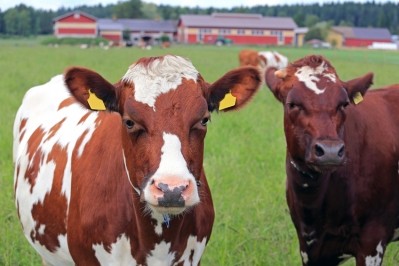Farmers object to feed link in Glanbia fixed milk price scheme

The latest fixed priced scheme from Ireland’s largest dairy processor rewards Irish dairy farmers who commit to supply their milk and purchase their dairy feed from Glanbia Ireland.
The scheme includes a fixed base milk price - 31 cents per liter (US $0.36) including VAT at base constituents of 3.6% butterfat and 3.3% protein plus a feed adjustor valued at between 2 and 3 cent per liter for those taking up that dairy feed element. The feed adjustor amount varies depending on the volume of milk committed to the scheme and the level of feed usage.
“While we welcome the fundamentals of such schemes, which are aimed at helping farmers manage price volatility, we are disappointed at the link to feed. Some of our members would have been pioneers within such fixed priced schemes, and if they decide not to avail of the feed option, they could now end up in a second, less favorable, tier of milk suppliers to Glanbia. So there is a degree of resentment around that,” Pat McCormack, deputy president of the Irish Creamery Milk Supplier Association (ICSMA), told FeedNavigator.
He was part of an ICSMA delegation that met Glanbia management on Wednesday this week to discuss the proposal, and ask for the priority status for the feed scheme to be dropped.
“Farmers like to be able to purchase feed where they want, based on quality and competitive prices. A lot of them would have been using the same feed brand for a number of years and would trust that in terms of the health and performance of their animals. They would be reluctant to change,” added McCormack.
However, Glanbia management told the ICSMA group that all indications were that the loyalty scheme would be over-subscribed.
“There are many farmers in the Glanbia region that are expanding rapidly and perhaps would welcome the stability such a scheme brings.
"However, we would argue that the 31 cents per liter price being offered over five years is rigid. While it might have looked like a good price 12 months ago, it is less the case today, with a positive momentum on milk pricing currently,” added McCormack.
These schemes sometimes had in-built adjustments for market price movements or farm input cost movements. but that is not included in the latest Glanbia contract, he said.
The Irish Farmers’ Association (IFA) has also objected to the feed linkage measure within the Glanbia scheme on the grounds of potential anti-competitiveness.
Henry Corbally, Glanbia chairman, commenting on the scheme, said the guaranteed milk price over five years is "well beyond what is currently offered in any other jurisdiction. I’m sure this is a scheme that will be welcomed by many farmers during a period of significant political and economic uncertainty.”
Sean Molloy, director of strategy and supply development, Glanbia Ireland, flagged up the tracebility benefits of the scheme for suppliers:
"The establishment of this cohort of farmers allows Glanbia Ireland promote the ‘closed loop’ procurement concept in terms of product claims and marketing initiatives. A ‘closed loop’ offers customers an exceptionally high level of assurance around the traceability and high quality of our dairy products, with all milk produced from grass and feeds sourced from our own Glanbia Ireland feed mills. This offers unrivalled assurance on the quality and integrity of the products."
Disparity between Irish and mainland European milk prices
Meanwhile, the chair of the ICMSA’s Dairy Committee, Gerald Quain, this week drew attention to “the hugely concerning gap” that has opened up between Irish dairy prices and those of mainland EU counterparts.
“While milk prices in Ireland have obviously improved in 2017, ICMSA would point out that Ireland is currently only in 12th position of the EU in terms of milk price and furthermore we note that Fonterra, which is heavily geared towards commodity products, pay higher prices than our Irish co-ops, which have for years told their farmer-suppliers that they had to be very cautious on the price they paid to farmers because the future was going to be about moving away from commodity and into value-added.
“This disparity in milk prices between Irish and EU and global competitors must be addressed and we will keep stressing it and asking for a logical explanation.”








